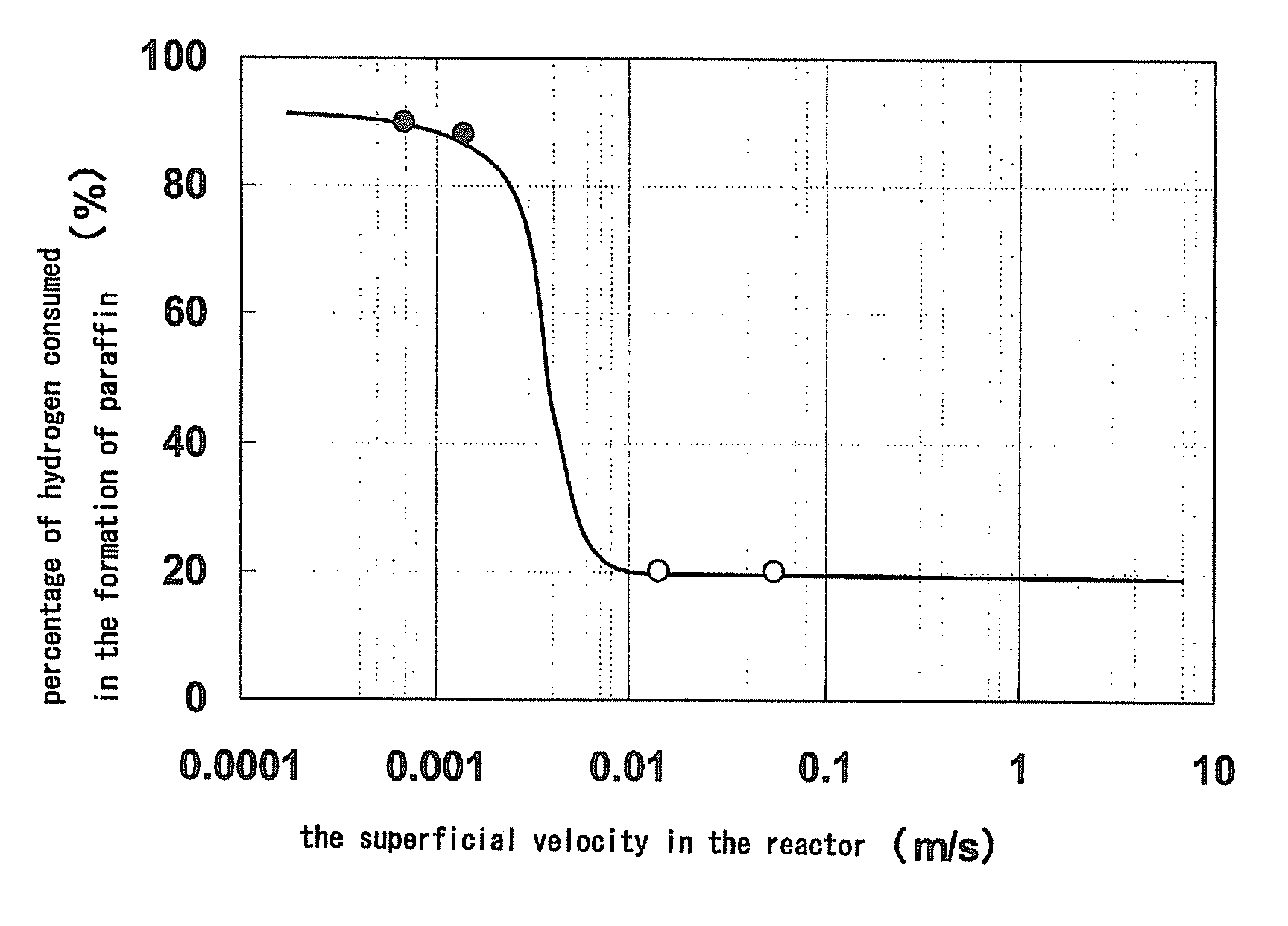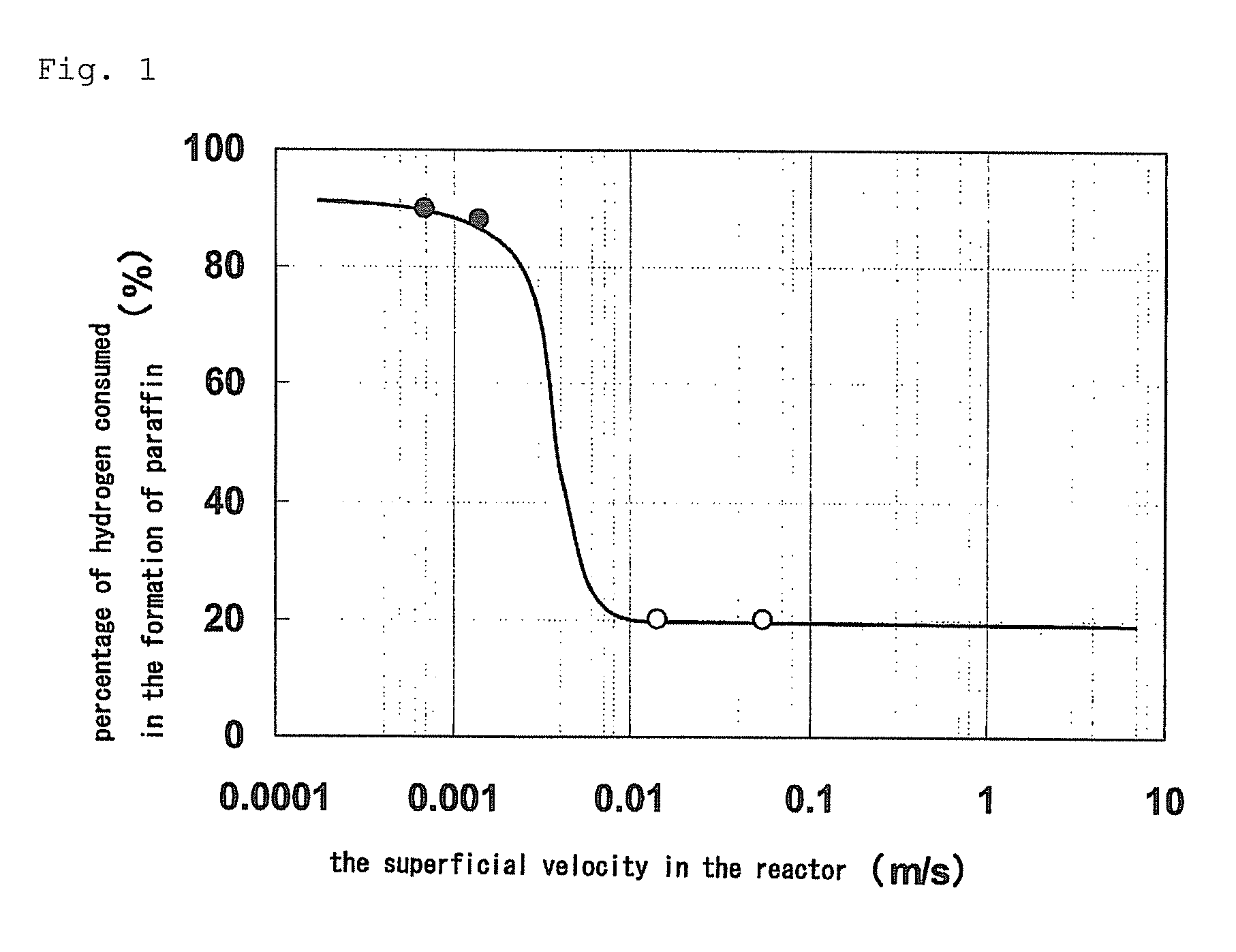Process for producing olefins
a technology of olefin and production process, which is applied in the direction of physical/chemical process catalysts, bulk chemical production, metal/metal-oxide/metal-hydroxide catalysts, etc., can solve the problems of reducing the purity of propylene produced, ethane concentration and accumulation in the system, and reducing the amount of propylene. , to achieve the effect of preventing the formation of paraffin in the reaction
- Summary
- Abstract
- Description
- Claims
- Application Information
AI Technical Summary
Benefits of technology
Problems solved by technology
Method used
Image
Examples
example 1
8.3 g of ammonium metatungstate (Aldrich) was dissolved in 1 liter of distilled water, and 50 g of silica gel Q-10 available from Fuji Silysia Chemical Ltd. (surface area: 300 m2 / g, pore volume: 1 ml / g, 150 to 500 μm) was suspended in the solution. The suspension was stirred at room temperature for 30 minutes. Subsequently, water was evaporated in an evaporator.
The resulting white solid was calcined under an air atmosphere at 550° C. for 6 hours. The calcined product was referred to as the catalyst WQ-10.
Magnesium oxide (Kyowamag 150 (registered trademark) manufactured by Kyowa Chemical Industry Co., Ltd.), which was fine powder, was compressed with a hydraulic press at 200 kg / cm2 for 3 minutes. The compact was then crushed and the particles were classified. The particles having diameters of 150 to 500 μm were used.
12 g of the catalyst WQ-10 and 48 g of the magnesium oxide were physically mixed and packed in the center of a SUS tube having an outer diameter of 18 mm, an inner diamet...
example 2
WO3 / SiO2 and magnesium oxide were prepared according to the processes described in Example 1, then shaped. 180 g of the shaped WO3 / SiO2 and 550 g of the shaped magnesium oxide were physically mixed and packed in a SUS tubular reactor having an outer diameter of 48.6 mm, an inner diameter (Di) of 41.2 mm and a length of 2 m. 240 g of the shaped magnesium oxide was further placed on the upper surface of the mixture. The top and bottom of the reactor were filled with α-alumina balls, and thereby the catalyst bed was fixed.
The catalyst bed was approximately 1 m high.
At normal pressure, nitrogen gas was supplied from the top of the reactor at a flow rate of 10.2 l / min, and the temperature was raised to 550° C. and maintained constant for about 10 hours. Subsequently, hydrogen gas and nitrogen gas were fed at flow rates of 1.5 l / min and 14.7 l / min, respectively, at 550° C. for 3 hours to reduce the catalysts. Thereafter, nitrogen gas was supplied again at a flow rate of 10.2 l / min at 550°...
example 3
The procedures of Example 2 were repeated except that the hydrogen gas was fed in the metathesis reactor at a flow rate of 12 l / h in terms of flow rate at 25° C. and normal pressure, i.e., the hydrogen concentration was 0.3% by volume relative to the raw materials.
After 24 hours after the initiation of the reaction, the butene conversion was 68.5%. Of the hydrogen supplied, 20% was consumed in the by-production of ethane and propane. The reaction was further continued, and the butene conversion was 53% after 500 hours after the initiation of the reaction.
PUM
| Property | Measurement | Unit |
|---|---|---|
| superficial velocity | aaaaa | aaaaa |
| temperature | aaaaa | aaaaa |
| temperature | aaaaa | aaaaa |
Abstract
Description
Claims
Application Information
 Login to View More
Login to View More - R&D Engineer
- R&D Manager
- IP Professional
- Industry Leading Data Capabilities
- Powerful AI technology
- Patent DNA Extraction
Browse by: Latest US Patents, China's latest patents, Technical Efficacy Thesaurus, Application Domain, Technology Topic, Popular Technical Reports.
© 2024 PatSnap. All rights reserved.Legal|Privacy policy|Modern Slavery Act Transparency Statement|Sitemap|About US| Contact US: help@patsnap.com









